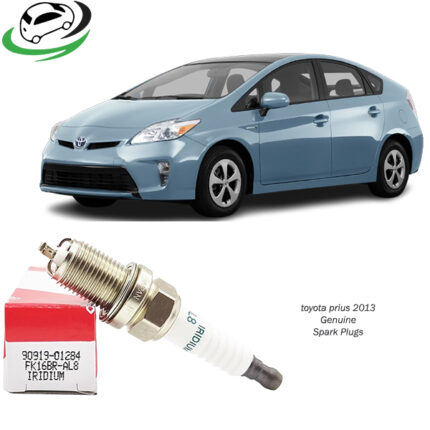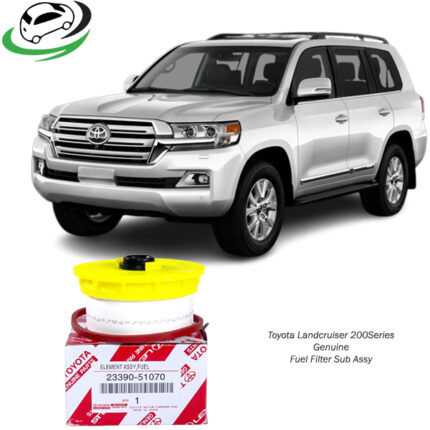-9%
Get Toyota Landcruiser 150 Series Genuine Front Brake Pad Kit 044650k370
Brake pads are one of the most important safety components of any vehicle, directly responsible for providing the stopping power necessary to slow down or bring the car to a complete halt. The braking system, particularly the front brakes, bears the majority of the braking force, making it crucial to use high-quality, genuine brake pad kits for optimal performance, safety, and longevity.
In this guide, we will dive deep into the function of brake pads, the components of a brake pad kit, the different types of brake pads, the advantages of using genuine brake pads, signs of wear, and proper maintenance practices.
1. Understanding Brake Pads and Their Function
Brake pads are a key part of the disc braking system, which is the most common type of braking system found in modern vehicles, especially for the front wheels. The basic principle of the braking system involves friction, where the brake pads press against the brake rotors to slow down the wheel.
Here’s how it works:
- Brake Pedal Pressed: When the driver presses the brake pedal, the hydraulic braking system generates pressure in the brake calipers.
- Calipers Engage the Pads: The calipers, in turn, push the brake pads against the rotating brake rotor (or disc).
- Friction Slows the Vehicle: The friction between the brake pads and the rotor slows down the rotation of the wheels, bringing the vehicle to a halt.
Since the front brakes handle about 70-80% of the braking load, the front brake pads experience significant stress and heat, making it vital to use genuine brake pads designed for durability and performance.
2. Components of a Genuine Front Brake Pad Kit
A front brake pad kit typically contains several components, each playing a crucial role in the efficient operation of the braking system. Here are the common components included in a genuine front brake pad kit:
a. Brake Pads:
The brake pads themselves are the core component of the kit. They consist of a metal backing plate with friction material attached to one side. This friction material is what makes contact with the rotor to create the stopping force.
b. Shims:
Shims are thin layers of material (often rubber or metal) placed between the brake pad and the caliper. They help reduce noise, vibrations, and harshness (NVH) during braking.
c. Clips or Anti-Rattle Springs:
Brake pad kits often include clips or anti-rattle springs, which help keep the pads in place and minimize noise. These small components prevent the brake pads from moving excessively within the caliper, reducing rattling sounds during braking.
d. Brake Lubricant:
Brake pad kits often come with a small packet of brake lubricant. This grease is applied to specific contact points between the caliper, brake pad, and shims to ensure smooth operation and reduce noise caused by friction.
e. Wear Indicators (Optional):
Some kits include wear indicators or sensors that alert the driver when the brake pads are nearing the end of their lifespan. These can be mechanical (producing a squealing noise) or electronic (triggering a warning light on the dashboard).
3. Types of Brake Pads
There are several types of brake pads available, each designed for specific driving conditions and vehicle requirements. The most common types include:
a. Organic (Non-Asbestos Organic – NAO):
Organic brake pads are made from natural fibers, resins, and other materials. They are typically softer, quieter, and less expensive but tend to wear out faster compared to other types. Organic pads are suitable for everyday city driving but may not withstand heavy or performance-oriented use.
b. Semi-Metallic:
Semi-metallic brake pads contain a mix of metal fibers, including steel, copper, and iron, along with resin-based materials. They offer improved heat resistance and durability compared to organic pads, making them suitable for more demanding driving conditions. However, they can be noisier and produce more brake dust.
c. Ceramic:
Ceramic brake pads are made from ceramic fibers and non-ferrous materials, offering excellent durability, minimal brake dust, and low noise levels. They are well-suited for high-performance vehicles and drivers who demand smooth, consistent braking performance. Ceramic pads also tend to last longer but are more expensive.
d. Low-Metallic NAO:
Low-metallic NAO pads contain organic materials mixed with a small amount of metal to improve heat resistance and braking power. They offer a good balance between performance and noise reduction, making them ideal for everyday driving conditions.
4. Advantages of Using Genuine Front Brake Pad Kits
When it comes to brake pads, using genuine (OEM) parts has several advantages over aftermarket alternatives. Here are the key benefits of using genuine front brake pad kits:
a. Superior Fit and Compatibility:
Genuine brake pads are designed specifically for your vehicle’s make and model, ensuring a perfect fit. This precision helps maintain the integrity of the braking system and reduces the risk of premature wear, brake noise, or performance issues.
b. Optimal Performance:
Genuine brake pads are engineered to meet the manufacturer’s exact specifications, providing the best possible performance. This means consistent braking power, better heat dissipation, and improved safety, especially in demanding driving conditions.
c. Enhanced Durability and Longevity:
OEM brake pads are made from high-quality materials that are designed to withstand extreme temperatures, pressure, and wear. This leads to a longer lifespan compared to cheaper, low-quality aftermarket pads, reducing the frequency of replacements and saving money over time.
d. Quieter Operation:
Genuine brake pad kits often include advanced noise-dampening technologies, such as high-quality shims and precise manufacturing tolerances. This reduces the likelihood of squealing or rattling noises during braking, ensuring a quieter and smoother driving experience.
e. Safety and Reliability:
Brake pads are a critical safety component, and using genuine parts ensures that your vehicle meets all safety and regulatory standards. This is especially important for maintaining the warranty and avoiding issues with insurance claims in case of accidents or failures.
f. Reduced Brake Dust:
Many genuine brake pads, especially ceramic pads, produce less brake dust compared to aftermarket alternatives. This keeps your wheels cleaner and helps extend the life of other braking system components, such as the rotors.
5. Signs Your Brake Pads Need Replacement
Brake pads wear down over time due to the constant friction they endure. Here are some common signs that your brake pads may need to be replaced:
a. Squealing or Squeaking Noise:
A high-pitched squealing noise when you apply the brakes is often a sign that the brake pads are worn down and need to be replaced. This noise is typically caused by a built-in wear indicator.
b. Grinding Sound:
A grinding noise indicates that the brake pads are completely worn out, and the metal backing plate is now in contact with the brake rotor. This can cause severe damage to the rotors and other braking components, leading to costly repairs.
c. Reduced Braking Performance:
If your vehicle takes longer to stop or the brakes feel less responsive, it could be a sign that the brake pads are worn or have become glazed (hardened due to excessive heat). Reduced performance compromises safety and requires immediate attention.
d. Brake Warning Light:
Some vehicles are equipped with a brake warning light on the dashboard that illuminates when the brake pads are too thin. If this light comes on, it’s time to inspect and replace the pads.
e. Vibration or Pulsation:
If you feel a vibration or pulsation in the brake pedal or steering wheel when braking, it may indicate uneven wear on the brake pads or warped rotors.
6. Maintenance Tips for Brake Pads
To ensure the longevity and performance of your brake pads, regular maintenance and inspections are essential. Here are some key tips:
a. Regular Inspection:
Have your brake pads inspected regularly, especially during routine vehicle maintenance or tire rotations. This helps catch wear early before it leads to more severe issues.
b. Replace Pads in Pairs:
Always replace brake pads in pairs (both front or both rear) to ensure even braking performance. Replacing only one set can lead to uneven wear and reduced stopping power.
c. Monitor Brake Fluid Levels:
Low brake fluid can affect the performance of the braking system. Check and maintain the brake fluid at the recommended level, and flush the brake fluid as per the manufacturer’s schedule.
d. Avoid Heavy Braking:
Try to avoid heavy or aggressive braking whenever possible, as it increases wear on the brake pads and generates excessive heat, which can cause glazing or warping of the pads and rotors.
e. Use High-Quality Parts:
Always opt for genuine brake pads and high-quality brake components. While aftermarket parts may seem more affordable upfront, the long-term performance, safety, and reliability of genuine pads far outweigh the initial cost.
Conclusion
Genuine front brake pad kits are essential for maintaining the safety, performance, and longevity of your vehicle’s braking system. By choosing OEM brake pads, you ensure optimal compatibility, superior performance, and peace of mind knowing your vehicle’s brakes will function as intended under all driving conditions. Regular inspection, timely replacement, and proper maintenance are critical to keeping your braking system in top shape, ensuring your vehicle remains safe on the road.
Follow us on Facebook for more parts.




Reviews
Clear filtersThere are no reviews yet.